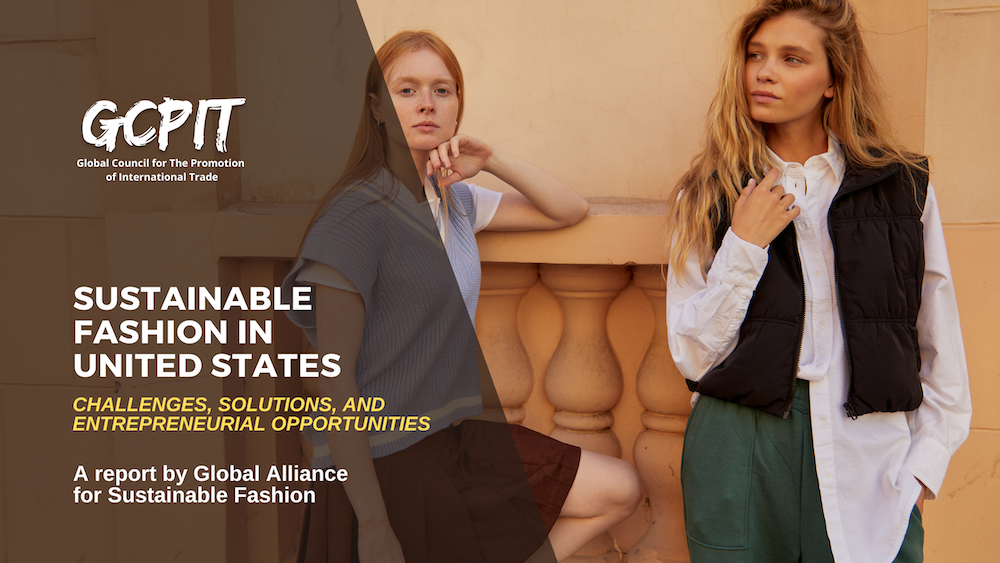Just How Cape Town Sustainable Fashion is Forming Eco-Conscious Shopping
Just How Cape Town Sustainable Fashion is Forming Eco-Conscious Shopping
Blog Article
Keep Ahead of the Contour by Checking Out Cutting-edge Style Trends
In a market as dynamic as style, staying ahead includes even more than simply adhering to existing trends-- it requires an exploration of innovation. The merging of innovation and fashion advertises a brand-new period of customer involvement.

Accepting Smart Textiles
In current years, the apparel industry has actually observed a transformative shift with the assimilation of clever fabrics, an advanced development that mixes technology with material. This development represents not only a blend of aesthetics and capability however additionally a considerable leap in the direction of sustainability and personalization in vogue. Smart textiles, additionally recognized as e-textiles, installed innovative electronic devices such as sensors and conductive threads within the material, allowing garments to connect with the setting or the wearer.
These fabrics are designed to check physical parameters, such as heart price or body temperature level, offering real-time health analytics. Past health applications, wise fabrics are likewise being used for flexible garments, which can alter shade or pattern in feedback to ecological stimulations, therefore offering a dynamic style experience.
In addition, the development of energy-harvesting textiles that create power from motion or sunlight is paving the way for self-dependent wearable technology. This development is attracting eco conscious consumers and developers intending to reduce the ecological footprint of style. As r & d in this area advancement, wise textiles are anticipated to become progressively prevalent, improving the landscape of modern style with their multifunctional abilities.
The Surge of 3D Printing
Revolutionizing the production landscape, 3D printing has arised as a game-changer in the apparel industry. This cutting-edge technology has actually allowed designers to push the borders of imagination, creating detailed and customized garments that were formerly unimaginable. By leveraging electronic layout and additive production, 3D printing promotes the production of intricate geometries and patterns, allowing developers to trying out new textures and structures.
A notable benefit of 3D printing in vogue is its capability to generate on-demand, lessening waste and reducing supply requirements. This performance not only maximizes production processes yet likewise enables for quick prototyping, making it possible for designers to bring their visions to life in a much shorter timeframe. Furthermore, 3D printing supports modification somewhat unequaled by standard approaches, providing customized fits and unique designs customized to individual customer choices.
The increase of 3D printing has likewise equalized style, making it obtainable to emerging designers who can now fabricate top quality items without considerable economic investment in conventional manufacturing infrastructure. As innovation remains to breakthrough, the garment industry is positioned to harness the full capacity of 3D printing, exploring brand-new products and strategies that will unquestionably redefine how style is developed and generated.
Sustainable Fashion Innovations
As the garment industry faces the pushing demand for environmental duty, sustainable style developments have actually emerged at the forefront of transformative adjustment. The expanding understanding of ecological impact has actually sustained a shift towards even more eco-conscious techniques and materials. Brands and designers are now focusing on sustainability, integrating methods that minimize waste and reduce carbon footprints.
One significant development is the rise of round style, which highlights recycling and upcycling to expand the lifecycle of garments. This approach not just lowers waste however additionally urges consumers to take on an extra mindful method to clothes usage.
Another breakthrough hinges on the adoption of cutting-edge dyeing techniques that make use of all-natural dyes or waterless processes, thus minimizing the large quantities of water and chemicals generally made use of in textile dyeing. Furthermore, innovations in biotechnology have actually led to the creation of lab-grown leather and materials, using cruelty-free and environmentally pleasant alternatives to standard materials. Via these pioneering efforts, the garment industry is making significant strides towards a much more lasting future.

Tech-Integrated Clothing
Tech-integrated clothing represents a cutting-edge combination of fashion and technology, improving how individuals interact with their garments. This innovative domain is marked by the inclusion of wise textiles and ingrained electronic components, enhancing both performance and visual charm. From health and fitness trackers installed in sports apparel to heated jackets controlled by means of smartphone applications, tech-integrated clothing provides consumers unprecedented convenience and versatility.
Pioneering brands are driving this trend, concentrating on creating garments that react to ecological stimuli or individual commands. For example, some garments can alter color or pattern in reaction to temperature level shifts, while others integrate biometric sensing units to keep an eye on wellness metrics like heart rate or tension degrees. The seamless assimilation of modern technology right into fabrics additionally reaches environmental sustainability, with initiatives to develop self-cleaning textiles or garments that adapt to weather conditions, hence minimizing the requirement for numerous layers.
In addition, the introduction of wearable technology is not just restricted to clothes however encompasses accessories like watches and eyeglasses, additional broadening the extent of tech-integrated fashion. As the market remains to innovate, the possibility for modification and personalization in apparel great post to read grows, offering customers one-of-a-kind, tech-enhanced fashion experiences that satisfy their individual requirements and choices.
Future of Virtual Fashion
In the last few years, the future of virtual fashion has actually arised as a transformative force within the market, leveraging advancements in digital technology to redefine exactly how style is produced, experienced, and taken in. By incorporating enhanced fact (AR), online fact (VIRTUAL REALITY), and 3D design tools, designers can currently craft immersive and interactive experiences that transcend standard fashion limits. Digital fashion permits for the development of garments that exist entirely in electronic environments, offering endless possibilities for development without the limitations of physical production.
This electronic change not just provides opportunities for imaginative expression yet likewise addresses sustainability concerns inherent in typical style practices. Cape Town Sustainable Fashion. By removing the demand for physical sources, virtual fashion minimizes waste and lessens carbon impacts. Moreover, the increase of online style lines up with the raising consumer demand for customized and unique experiences, as virtual garments can be tailored and customized to private preferences effortlessly

Conclusion
The fashion market's future lies in the combination of innovative modern technologies and sustainable techniques. Virtual fashion is positioned to redefine consumer communications.
In current years, the style market has experienced a transformative shift with the combination of clever fabrics, a cutting-edge advancement that mixes technology with fabric.As the fashion industry grapples with the pressing requirement for environmental duty, sustainable style developments have emerged at the leading edge of transformative adjustment.In current years, the future of online fashion has emerged as a transformative force within the market, leveraging advancements in electronic technology to redefine exactly how style is developed, experienced, and eaten. The rise of virtual style straightens with the increasing consumer need for distinct and individualized experiences, as online garments can be personalized and tailored to private preferences with ease.
The fashion industry's future lies in the integration of innovative modern technologies and lasting methods.
Report this page